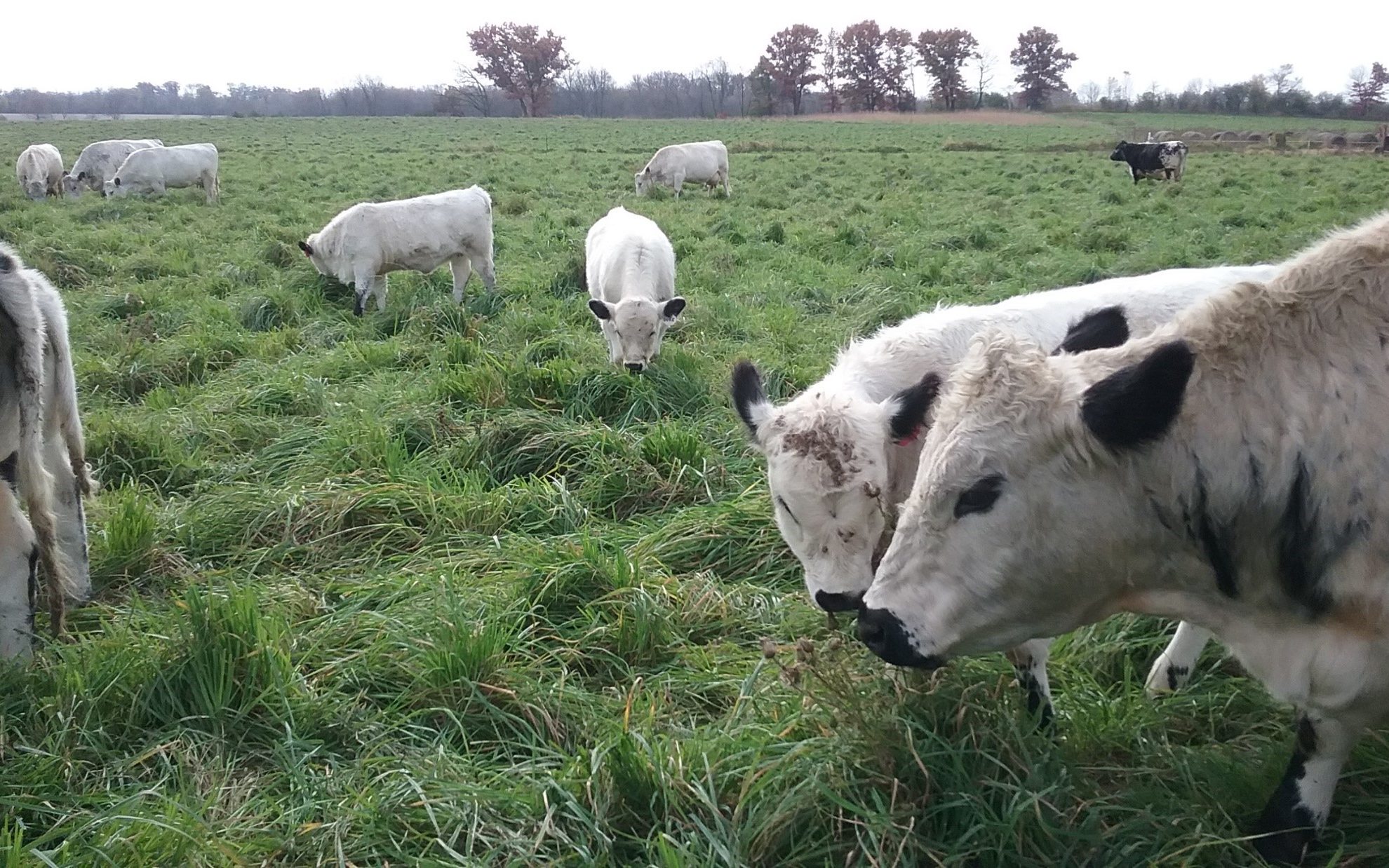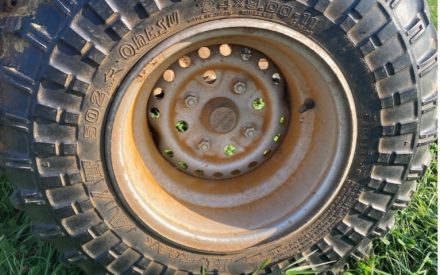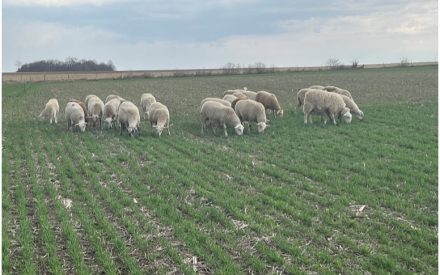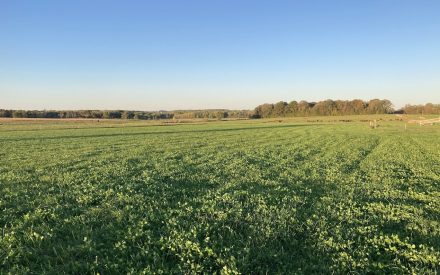Stockpile grazing is a technique that can help minimize the high cost of winter feeding. A goal common to nearly all grazing operations is extending the grazing season as late into the year as possible. Using livestock to harvest forage is the most cost-effective method of feeding your animals, and every additional day of grazing has positive implications on farm finances.
What is stockpile grazing?
Stockpile grazing is a strategy that works well for farmers across the Upper Midwest, and pairs well with other fall/winter feeding strategies. Stockpile grazing extends the grazing season into fall and early winter by “storing” fresh pasture for grazing after forages go dormant. It involves setting aside a portion of pasture and allowing forages to accumulate for a period of 60-80 days in late summer, then grazing the stockpiled forage during the non-growing season. Well-managed stockpiled pasture can yield 2 tons/acre, or enough to feed 6 animal units for a month. Dairy heifers at the University of Wisconsin grazing stockpiled pastures achieved average daily gains of 1.9 – 2.2 lbs/day during the stockpile grazing period (Wells, 2022).
Planning is critical.
Stockpile grazing must be properly planned ahead of time. Since a portion of the pasture area is removed from the rotation for a stockpiling period of 60+ days, this requires additional pasture area to allow for normal rotations to continue while stockpiling. Some farms plan stockpile grazing into their system every season and manage the entire operation accordingly, while other farms make the decision seasonally based on how weather and forage yields play out. Other farms may also use extra hay-crop land or rented pasture as opportunities for stockpile grazing. Either way, planning is a critical part of stockpile grazing.
Considerations for success.
A big factor for successful stockpile grazing is the pasture species composition. In general, cool-season perennials work the best because they maintain forage quality into the dormant season. Grasses have an edge on legumes as they don’t wilt and lose leaves after frost nearly as much, and they have minimal bloat potential, but mixed pastures that include legumes can serve the purpose well. Other considerations necessary for stockpile grazing are water availability when weather conditions turn cold, late-summer clipping or harvesting to set up the forage for stockpiling, and the potential need for an application of fertilizer.
Steps to stockpile grazing.
- Pull a group of rotationally-grazed paddocks out of the grazing rotation in August to allow for 60-80 days of forage accumulation
- Clipping or harvesting at the start of stockpiling can ensure good forage palatability by removing stems and seedheads, and setting the forage back to the vegetative stage
- Applications of nitrogen are generally not recommended for mixed grass and legume stands (UW A2809), but with fall growth as the objective 30 – 60 lbs N/acre may be economical for grass
- Begin stockpile grazing when temperatures halt the growth of non-stockpiled pastures
- Utilize a strip-grazing method to ensure efficient forage utilization (60-70%) and manure distribution
- Conclude grazing when a 4” residual height is achieved, when pastures become saturated prior to freeze-up, or when forage becomes buried by snow and ice
Stockpile grazing is one of several cost-effective strategies available to Wisconsin farmers for extending the grazing season beyond the growing season.




 Managing Rust in Cool Season Pastures
Managing Rust in Cool Season Pastures Grazing Cover Crops and Annual Forages
Grazing Cover Crops and Annual Forages Grazing to Protect Surface Water: Considering critical and sensitive areas
Grazing to Protect Surface Water: Considering critical and sensitive areas Research Brief: Interseeding legumes into grass pastures
Research Brief: Interseeding legumes into grass pastures


